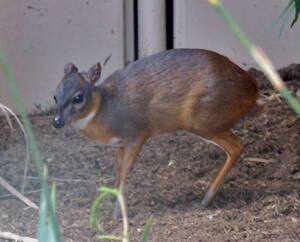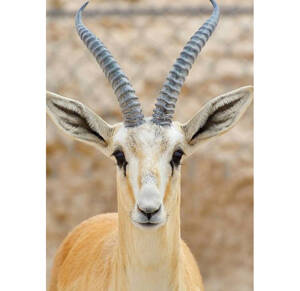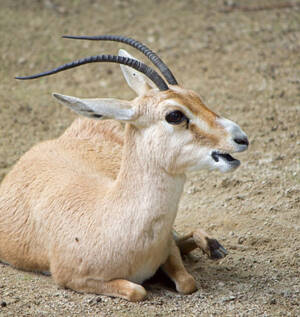
Raphicerus sharpei
Raphicerus sharpei
Sharpe's Grysbok (scientific name: Raphicerus sharpei) is called Sharpe&···

Raphicerus melanotis
Raphicerus melanotis
Black-eared antelope (scientific name: Raphicerus melanotis) is also known a···

Raphicerus campestris
Raphicerus campestris
Raphicerus campestris (Steenbok in English, Steenbok in French, Steenbok in ···

Ourebia ourebia
Ourebia ourebia
Orebia ourebia (scientific name: Ourebia ) is called Oribi in foreign langua···

Oreotragus oreotragus
Oreotragus oreotragus (English: Klipspringer, French: Oréotrague, South Afr···

Neotragus moschatus
Neotragus moschatus
Neotragus moschatus (scientific name: Neotragus moschatus): It is the only s···

Neotragus pygmaeus
Neotragus pygmaeus
Royal Antelope (scientific name: Neotragus pygmaeus) English Royal Antelope,···

Neotragus batesi
Neotragus batesi
Bates' Pygmy Antelope (scientific name: Neotragus batesi) English: Bates···

Madoqua saltiana
Madoqua saltiana
Madoqua saltiana (Scientific name: Madoqua saltiana) English: Salt's Dik···

Madoqua piacentinii
Madoqua piacentinii
Silver Dik-dik (scientific name: Madoqua piacentinii) English: Silver Dik-di···

Madoqua kirkii
Madoqua kirkii
Kirk's Dik-dik (scientific name: Madoqua kirkii) English: Kirk's Dik···

Madoquaguentheri
Madoquaguentheri
Madoquaguentheri (scientific name: Madoquaguentheri) English: Guenther's···

Litocranius walleri
Litocranius walleri,Kirin Antelope
Giraffe (scientific name: Litocranius walleri), also known as Kirin antelope···

Nanger soemmerringii
Nanger soemmerringii,Sudanese antelope, Sumerian antelope
Somali gazelle (scientific name: Nanger soemmerringii) is also known as Soem···

Nanger granti
Nanger granti,Grant's gazelle, Grant's gazelle
Grant's gazelle (scientific name: Nanger granti) is a large, light-haire···

Nanger dama
Nanger dama,Fallow deer gazelle, Damma gazelle
Nanger dama (scientific name: Nanger dama) is also known as Dama Gazelle, Ad···

Gazella spekei
Gazella spekei
The Gazella spekei is the smallest gazelle. The Gazella spekei was once cons···

Gazella marica
Gazella marica,Sand Gazelle
Arabian Sand Gazelle (Scientific name: Gazella marica) English: Arabian Sand···

Gazella leptoceros
Gazella leptoceros,Slender-horned Oryx
Slender-horned Gazelle (scientific name: Gazella leptoceros) English: Slende···

Gazella gazella
Gazella gazella
Mountain Gazelle (scientific name: Gazella gazella) is also known as Mountai···

Gazella dorcas
Gazella dorcas,Dorcas gazelle
Deer gazelle (scientific name: Gazella dorcas) foreign name Dorcas Gazelle, ···
